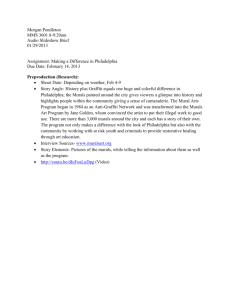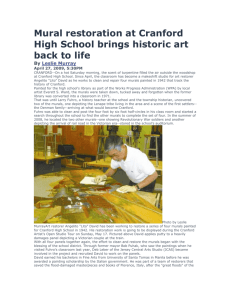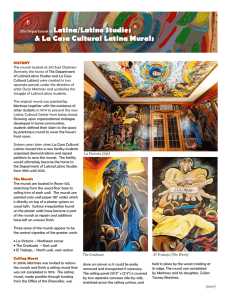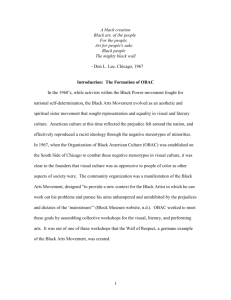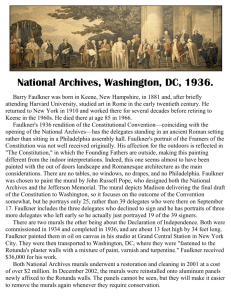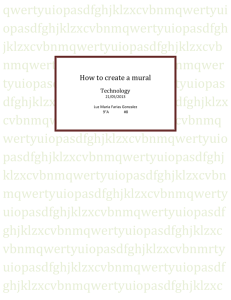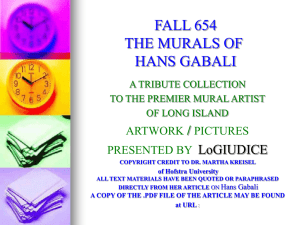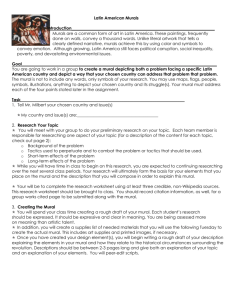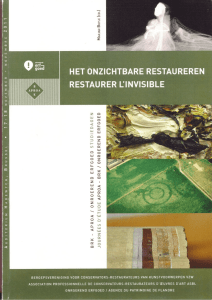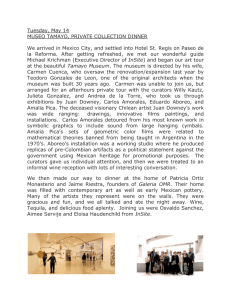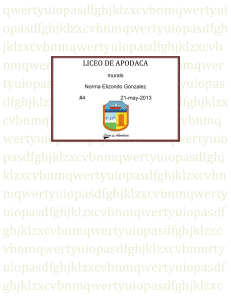File
advertisement
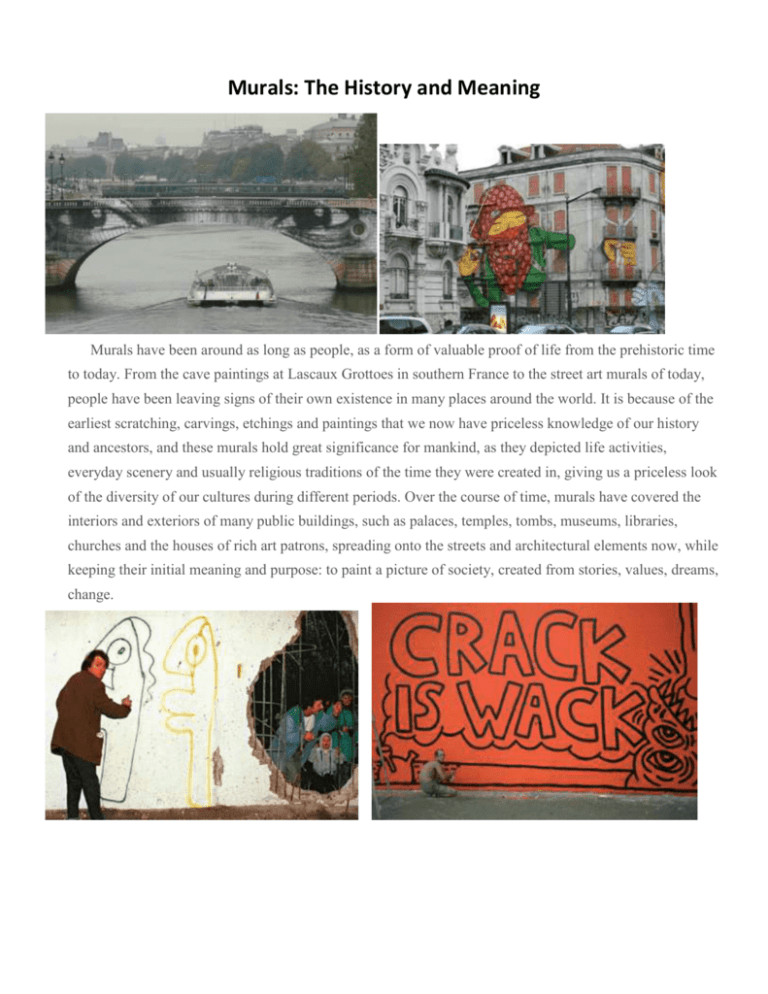
Murals: The History and Meaning Murals have been around as long as people, as a form of valuable proof of life from the prehistoric time to today. From the cave paintings at Lascaux Grottoes in southern France to the street art murals of today, people have been leaving signs of their own existence in many places around the world. It is because of the earliest scratching, carvings, etchings and paintings that we now have priceless knowledge of our history and ancestors, and these murals hold great significance for mankind, as they depicted life activities, everyday scenery and usually religious traditions of the time they were created in, giving us a priceless look of the diversity of our cultures during different periods. Over the course of time, murals have covered the interiors and exteriors of many public buildings, such as palaces, temples, tombs, museums, libraries, churches and the houses of rich art patrons, spreading onto the streets and architectural elements now, while keeping their initial meaning and purpose: to paint a picture of society, created from stories, values, dreams, change. The prehistoric murals found in caves in France and Spain. What is A Mural? A Walk through History The word mural originates from the Latin word “murus”, meaning “wall”. Today, we can define murals as any piece of artwork painted or applied directly onto a wall, ceiling or other larger permanent surfaces, flat, concave or convex, to be precise. A favorite technique of many artists, including masters like Leonardo Da Vinci and Michelangelo Buonarroti, the art of muralism flourished during the 1920s, after the Mexican revolution. It is during this time that murals got a new dimension as a powerful visual communication tool, meant to promote the opinion of the people and to transmit social and political messages towards unity. Through the large paintings of “the great three”: Diego Rivera, José Clemente Orozco and David Alfaro Siqueiros, murals became the most important form of expression, often the subject of controversy and always a symbol of unity, freedom and hope. The Mexican muralism art inspired the creation of many other similar movements around the world, the biggest being the Chicago art movement in the 1960s. Murals also represent one of the most important features of Northern Ireland, depicting the region’s past and present political and religious divisions. Since the 1970s, the country has seen almost 2,000 paintings dedicated to the fight against racism and environmentalism, among many other issues. Another famous place charged with political murals was the Berlin Wall, whose Western side saw many murals between its creations In 1961 and its destruction in 1989, including the works by artists Keith Haring and Noir. . Mural Techniques As murals cover large surfaces that could be of different texture, compositions and traits, their creators have developed several techniques adaptive to their “canvases”. One of the oldest methods is a fresco painting, which sees paint applied on plaster on walls or ceilings. Mixed with water and pigment on a wet plaster, the paint interacts with air, causing a chemical reaction which fixes the pigment particles in the plaster. Other known materials used in mural paintings are tempera, oil painting (one of the easiest, yet opaque methods), acrylic painting using brush, roller or airbrush/aerosol. Sometimes, when finished, the murals can be given coats of varnish or protective acrylic glaze to protect the work from UV rays and surface damage. More recently, artists have introduced digital techniques of mural painting, such as wallscapes – large advertisements, which could be painted on directly or printed out as vinyl and then attached to a surface. Very often, murals are commissioned by patrons, public institutions or large corporations. What symbols can you find in this mural? What does the mural represent?

